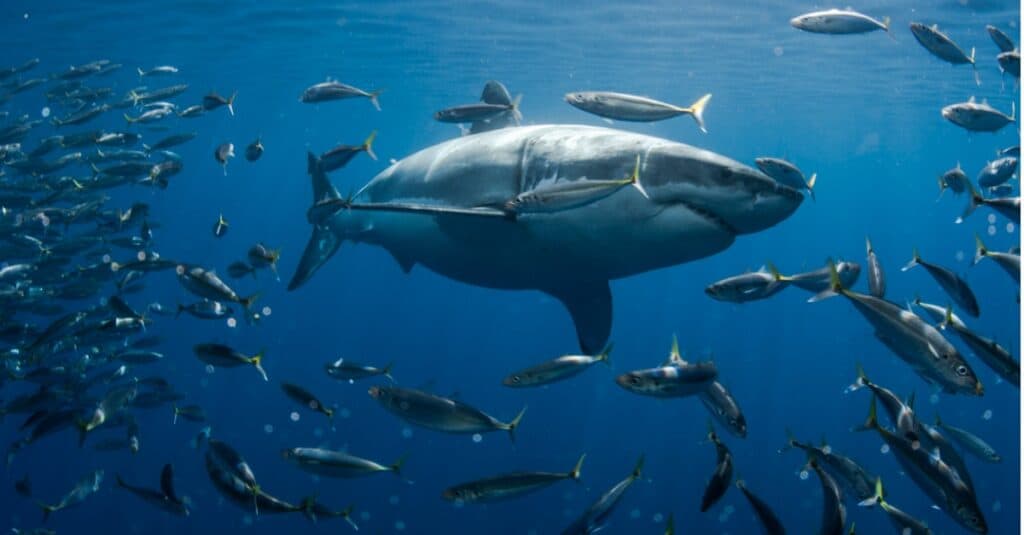Not many fish could swim up against the body of a Great White Shark and expect to live to tell the tail. A video captured by a young man passionate about sea life in Southern California shows us a unique perspective into the wild.
Check Out the Video Below!
A juvenile white shark is swimming alone when suddenly three yellowtail fish come up from behind. At one point, we can see the yellowtails rub their bodies against the ferocious predator.
Later in the video the fish scatter right before the shark twists around, almost looking for what has just touched it. Yellowtail fish are known for their intelligence and quick movement, so there’s no wonder how these little fishies got away with this.
A comment on the video shows us just how small this world can be. It reads, “I’m the paddle boarder in the video. Thanks for taking these great videos. I talked with you on the beach. I’m a biologist. If you’re interested in marine biology, you could definitely turn this passion into a career.”
Why Do Fish Swim with Sharks?

Yellowtail fish come up from behind to rub against a young
great white shark
.
©iStock.com/atese
You’re likely asking yourself why a fish would swim so close to a much larger creature that could kill them in seconds. You see, the body of a great white shark is rough, similar to sandpaper.
When a yellowtail rubs its body against the textured surface, it’s able to get pesky and dangerous parasites off. This type of relationship between two or more animals is known as symbiotic. A symbiotic relationship is where two or more distinct species can live together for the benefit of one or all.
What Are Some Other Examples of Symbiotic Relationships in the Ocean?
Sea cucumbers and shrimp also share this type of relationship. An imperial shrimp will hang on tightly as the sea cucumber moves through seas containing the shrimp’s food source in order to use it as a vehicle.
The relationship between the clownfish and sea anemone is an excellent illustration of mutualistic symbiosis, in which each organism gains from the presence of the other. The anemone shields the clownfish by enclosing it in its venomous arms, to which the animal is immune, and by dropping food leftovers for the animal to eat.

Clownfish in a
sea anemone
.
©Alex Stemmers/Shutterstock.com
In exchange, the clownfish cleanses the anemone of parasites, keeps predators at bay, and even provides nutrition through its excretion.
Whales and the barnacle are yet another instance of a commensal interaction. The whale does not benefit from the barnacles growing on its body, but it also doesn’t encounter any negative consequences. The barnacle, on the other hand, benefits greatly by clinging to a whale since it feeds through a filter.
The photo featured at the top of this post is © iStock.com/LaSalle-Photo
Thank you for reading! Have some feedback for us? Contact the AZ Animals editorial team.






